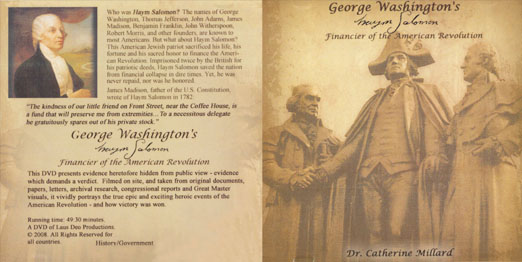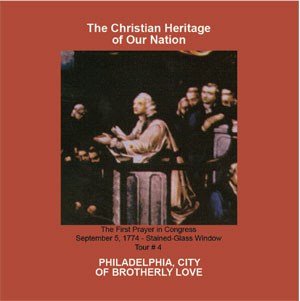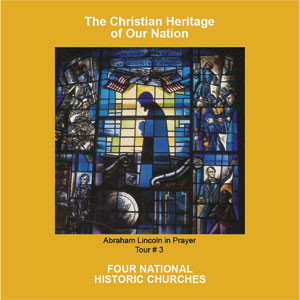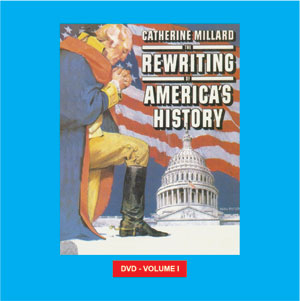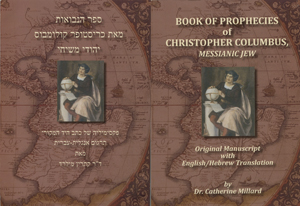The first Thanksgiving Day service in what was to become the United States of America was held on August 9, 1607, by colonists en route to found the short-lived Popham Colony at what is now Phippsburg, Maine. After the two ships reached one of the Georges Islands off the Maine Coast, the Reverend Richard Seymour led a group in “giving God thanks for our happy meeting and safe arrival into the country.”
The 1607 Jamestown Island Settlement
The First permanent English settlement in America was founded in Jamestown, on the James River in Virginia, in 1607. After landing on these brand new shores, their first act was to celebrate the Lord’s Supper and thank God for a safe trip across the seas, as depicted in the the famous stained-glass window called the “Patriot’s Window” in Christ Church, Philadelphia – now “the nation’s church.”
December 4, 1619 – Berkeley, Virginia
On December 4, 1619, a band of stalwart Englishmen landed in Virginia at a site on the James River, near Berkeley. The weary travelers disembarked and immediately fell to their knees to thank God for their safe arrival. The event is commemorated yearly, as directed in the group’s original “Instructions” from England: “We ordained that the day of our ship’s arrival at the place assigned for plantation in the land of Virginia shall be yearly and perpetually kept holy as a day of thanksgiving to Almighty God.”
The 1620 Pilgrims
In 1607, a group of English Bible-believing Christians, having undergone tremendous persecution for their faith in Christ and return to the Bible as their way of life, started a colony in Holland. The hardships and difficulties they encountered forced them to leave from Delft Haven, on a ship called the “Speedwell,” on July 22nd, 1620. A masterpiece painting of this scene hangs in the Main Rotunda of the U.S. Capitol, and shows these Pilgrims deep in prayer on board ship, giving praise and thanksgiving to Almighty God. Centrally depicted is an open Bible – opened at the first book of the New Testament – Matthew’s account of Christ’s life. On the top left-hand sail, just above the hemline, are the words: “God with Us,” taken from Matthew 1, verse 23, the name the angel gave Joseph for the coming Messiah. “Immanuel,” from Hebrew, “Im” – “with,” “anu” – “us,” “El” – “God,”, translated, “With us God,” the messianic prophecy in Isaiah 7:14.
The Mayflower
Upon their arrival in England, this Pilgrim band embarked on the Mayflower, risking their lives for the faith, in coming to an unknown new world. After landing on the New England coast on November 11th, 1620, their first act was to kneel down and give thanks to Almighty God for a safe arrival. Around the inner dome of the U.S. Capitol’s Main Rotunda, there is a 300-foot frieze painted by an Italian artist, Constantino Brumidi, the most talented artist the Capitol has ever known. It depicts 15 landmarks, 400 years of America’s history, commencing in 1492 – Christopher Columbus’ Discovery of the New World. The 7th landmark is the landing of the Pilgrims at Plymouth Rock, Massachusetts. There you see the Mayflower settlers kneeling in prayer and thanksgiving to Almighty God. One of the Pilgrim elders holds a large Bible.
The Mayflower Compact
The famed Mayflower Compact, drawn up and signed by these Pilgrims in the cabin of their ship, reads, excerpted:
“In the name of God, Amen. We whose names are underwritten…by the grace of God…having undertaken for the glory of God, and advancement of the Christian faith…a voyage to plant the first colony in the northern parts of Virginia: do by these presents, solemnly and mutually in the presence of God and one another, covenant and combine ourselves together into a civil body politic…Anno Dom. 1620” – translated from Latin to mean, “The Year of our Lord (Jesus Christ) 1620.”
Plymouth
This Pilgrim band endured tremendous hardships. During the bleak winter of 1620, about half of the 101 passengers of the Mayflower died. Gathering a rich harvest in the Fall of 1621, Governor William Bradford proclaimed a day of Thanksgiving to Almighty God for His entire colony.
The Third Summer
By the time of the Pilgrim’s third summer in America, they had lost almost half their colony due to sickness, starvation, persecution and attacks from unfriendly Indians. That third summer a drought hit the colony and continued for twelve weeks, completely drying up the Pilgrim’s corn and beans – their sole source of sustenance in the harsh winter months.
Prayer
Governor Bradford wrote in his diary that even the oldest Indians couldn’t remember such a severe drought. The entire colony was in great fear recalling the previous winter when every man, woman and child had miraculously survived on a ration of only five kernels of corn per day! Consequently, the entire colony set aside a day to fast and pray for rain.
On the day of the fast, clouds began to gather. History records there was no thunder or wind, but that night a soft rain began to fall and continued for fourteen days. As a result, even the unbelieving Indians who had been doing rain dances, glorified God because the dead corn which had been laying flat on the ground literally came back to life, saving the colony from starvation and death!
Fasting, Prayer and Thanksgiving
So we see that fasting and prayer have played a powerful role in the birthing of America. In November of that year, after the crops were gathered in abundance, Governor Bradford ordered that “all ye Pilgrims, with ye wives and little ones, do gather at the meetinghouse, on the hill…there to listen to the pastor, and render thanksgiving to the Almighty God for all His blessings.”
The Pilgrims and Indians then came together for a feast of celebration to thank God for His supernatural provision. But unbeknownst to most Americans, the Pilgrims held a meal of fasting before each feast: every person receiving five kernels of corn on an empty plate – a vivid reminder of God’s everlasting goodness and grace.
The Old Testament
In the Old Testament, the Jews, God’s chosen people, have given thanks for abundant harvests with the eight-day Feast of Tabernacles, which continues in October of each year to this day.
Thanksgiving to Almighty God stems from the Bible. God delivered His people, the Israelites, out of the land of Egypt and out of the house of bondage and fed them “manna,” which means in Hebrew, “What is it?” It was a form of bread that fell out of heaven on a daily basis, as they wandered for forty years in the wilderness before crossing over the Jordan into the Promised Land. He then exhorted and admonished them to love, worship and thank Him with all their hearts, souls, minds and strength, and to serve Him alone. This He did through the famed Tables of the Covenant – or Ten Commandments, which were written, as the biblical narrative tells us, by the finger of God on two tablets of stone and handed to his servant Moses on Mount Sinai, to carry down to the people. (Exodus 20).
The New Testament
Paul, the great apostle to the Gentiles as he is called, planted most of the New Testament churches in Asia and Asia Minor during the first century after Christ ascended into heaven. To the young church in Philippi, he writes:
“Be careful for nothing, but in everything by prayer and supplication with thanksgiving let your requests be made known to God. And the peace of God, which passeth all understanding, shall keep your hearts and minds in Christ Jesus.” (Philippians 4: 6, 7).
In his first letter to the newly-established Thessalonian church, Paul writes: (Chapter 5, verses 16-18):
“Rejoice evermore, pray without ceasing, in everything give thanks, for this is the will of God in Christ Jesus concerning you.”
We now see how the origins of Thanksgiving stem from the Bible, the Word of God. The Pilgrims, as Christians, were instructed by God Himself to thank Him for all their blessings which He had bestowed upon them.
The Law of 1636
Although the early Pilgrims never set a regular Thanksgiving day, they held such observances at various times. A law of November 15, 1636 established that: “solemn days of humiliation by fasting, prayer and thanksgiving as occasion, shall be offered,” and these would be commanded by the Governor.
The American Revolution
Appropriately, the Revolutionary War, during which time the thirteen colonies joined in a common effort for the first time, also caused the first Thanksgiving Day to be observed, giving thanks to Almighty God simultaneously throughout all the colonies, the occasion being the celebration of the patriot victory over the British at Saratoga in October of l777. While you are visiting the Main Rotunda of the U.S. Capitol, the second famous oil painting from left to right, as you enter, graphically depicts this surrender. It was painted by John Trumbull, George Washington’s Aide-de-Camp, an eye-witness to these events. So important to the Revolution was this battle that Samuel Adams called upon the Continental Congress to declare a National Day of Thanksgiving.
Congress’ 1777 Day of “Thanksgiving and Praise,”
On November 1, 1777, Congress approved Adams’ proclamation, setting December 18, 1777 as a day of “Thanksgiving and Praise,” and the residents of the colonies enthusiastically observed the day with prayers to Almighty God and feasts.
In the course of the American Revolution, the Continental Congress called for a number of days of Thanksgiving. Local thanksgiving celebrations took place, the most notable of which was at the headquarters of the Continental Army at Valley Forge, Pennsylvania, after General George Washington received news that France had allied with the colonies.
France’s Alliance
To celebrate this alliance, Washington ordered his troops to assemble on May 7, 1778. Ceremonies began with the army chaplains offering prayers of gratitude to Almighty God, then the General reviewed the troops; thirteen cannons fired a salute, after which a hearty dinner was enjoyed and an outdoor banquet was given for the French officers and other guests.
Thomas Jefferson’s 1779 “Day of Publick Prayer and Thanksgiving to Almighty God”
In 1779, Thomas Jefferson, then Governor of Virginia, proclaimed December 9th of that year as a “Day of Publick Prayer and Thanksgiving to Almighty God,” excerpted as follows:
‘Whereas it becomes us humbly to approach the throne of Almighty God, with gratitude and praise, for the wonders which His goodness has wrought in conducting our forefathers to this western world; for His protection to them and to their posterity, amidst difficulties and dangers; for raising us their children from deep distress to be numbered among the nations of the earth; and for arming the hands of just and mighty Princes in our deliverance; and especially for that He hath been pleased to grant us the enjoyment of health and so to order the revolving seasons, that the earth hath produced her increase in abundance, blessing the labours of the husbandman, and spreading plenty through the land; that He hath prospered our arms and those of our ally, been a shield to our troops in the hour of danger, pointed their swords to victory, and led them in triumph over the bulwarks of the foe…that He hath prospered our commerce, and given success to those who sought the enemy on the face of the deep; and above all, that He hath diffused the glorious light of the gospel, whereby, through the merits of our gracious Redeemer, we may become the heirs of His eternal glory. Therefore,
Resolved, that it be recommended to the several States to appoint THURSDAY the 9th of December next, to be a day of publick and solemn THANKSGIVING to Almighty God for His mercies, and PRAYER, for the continuance of His favour and protection to these United States; to beseech Him that He would be graciously pleased to influence our public Councils, and bless them with wisdom from on high, with unanimity, firmness and success; that He would go forth with our hosts and crown our arms with victory; that He would grant to His church, the plentiful effusions of divine grace, and pour out His Holy Spirit on all Ministers of the gospel; that He would bless and prosper the means of education, and spread the light of Christian knowledge through the remotest corners of the earth; that He would smile upon the labours of His people, and cause the earth to bring forth her fruits in abundance, that we may with gratitude and gladness enjoy them; that He would take into His holy protection our illustrious ally,…that He would graciously be pleased to turn the hearts of our enemies, and to dispense the blessings of peace to contending nations. That He would in mercy look down upon us, pardon all our sins, and receive us into His favour; and finally, that He would establish the independence of these United States upon the basis of religion and virtue, and support and protect them in the enjoyment of peace, liberty and safety.
I do therefore, by authority from the General Assembly issue this my proclamation, hereby appointing Thursday, the 9th of December next, a Day of publick and solemn Thanksgiving and Prayer to Almighty God, earnestly recommending to all the good people of this commonwealth, to set apart the said day for those purposes, and to the several ministers of religion to meet their respective societies thereon, to assist them in their prayers, edify them with their discourses, and generally to perform the sacred duties of their function, proper for the occasion. Given under my hand and the seal of the Commonwealth, at Williamsburg, this 11th day of November, in the year of our Lord, 1779, and in the fourth of the Commonwealth.
THOMAS JEFFERSON
George Washington’s 1789 National Thanksgiving Day
The end of the American Revolution in 1783 secured independence for the thirteen American colonies, and the adoption of the Constitution established a viable government that began to function in 1789. Both the Revolutionary War and the formation of the Constitution were massive undertakings, and to celebrate their successful outcome, Washington, who by then had become the first President of the United States, proclaimed Thursday, November 26, 1789, a day of National Thanksgiving. At the request of the President, citizens assembled in churches that day, and thanked God for His beneficence.
Washington’s 1795 National Day of Thanksgiving and Prayer
In 1795, once again, Washington proclaimed another National day of Thanksgiving, excerpted thus:
“…In such a state of things it is in an especial manner our duty as a people, with devout reverence and affectionate gratitude, to acknowledge our many and great obligations to Almighty God, and to implore Him to continue and confirm the blessings we experienced…Deeply penetrated with this sentiment I, George Washington, President of the United States, do recommend to all religious societies and denominations, and to all persons whomsoever, within the United States, to set apart and observe Thursday, the 19th day of February next, as a day of public Thanksgiving and Prayer…”
A Day of Thanksgiving for California’s Statehood – 1849
Meanwhile, shortly before gaining statehood, California observed a day of Thanksgiving and praise to Almighty God on October 24, 1849. We thus see that on both the East and West Coasts of America, the Pilgrims gave thanks to the God of Abraham, Isaac and Jacob, the God of our Lord and Savior Jesus Christ, for His abundant blessings.
Sarah Josepha Hale – A Permanent National Thanksgiving Day
The establishment of a national Thanksgiving Day on a permanent basis, however, can be traced to the year 1827– to a Christian woman of caliber, by the name of Sarah Josepha Hale. As editor of the Ladies’ Magazine in Boston, she began to urge the observance of a uniform day throughout the country to express thanks to Almighty God for the blessings of the year. After the consolidation of the Ladies’ Magazine with Godey’s Ladies Book a magazine of 150,000 circulation – the largest in the country at the time, she wrote editorial after editorial in support of the annual Thanksgiving Day. She also wrote personal letters to the successive U.S. Presidents and governors of all the states, persuading many of the latter to fix the last Thursday in November as the National Day of Thanksgiving. In September 1863, her last editorial read:
“Would it not be a great advantage, socially, nationally, religiously, to have the day of our American Thanksgiving positively settled? Putting aside the sectional feelings and local incidents that might be urged by any single State or isolated territory that desired to choose its own time, would it not be more noble, more truly American, to become national in unity when we offer to God our tribute of joy and gratitude for the blessings of the year?”
Abraham Lincoln’s 1863 Thanksgiving Proclamation
This was a time of turmoil, bloodshed and strife for “this nation under God” as Abraham Lincoln so appropriately called America in his Gettysburg Address. The following month, on October 3, 1863, Abraham Lincoln, who himself frequently used Scriptures in his political speeches, established a national Day of Thanksgiving in the following Proclamation, excerpted as follows:
“No human counsel hath devised, nor hath any mortal hand worked out these great things. They are the gracious gifts of the Most High God, who, while dealing with us in anger for our sins, hath nevertheless remembered mercy…It has seemed to me fit and proper that they should be solemnly, reverently and gratefully acknowledged as with one heart and one voice by the whole American people. I do, therefore, invite my fellow citizens in every part of the United States, and also those who are at sea and those who are sojourning in foreign lands, to set apart and observe the last Thursday of November next as a day of Thanksgiving and Praise to our beneficent Father who dwelleth in the heavens.”
From 1863 Onwards
Ever since 1863, therefore, Thanksgiving has been observed annually. For 158 years it has been scheduled for the last Thursday in November, with only two exceptions: President Andrew Johnson designated the first Thursday in December as Thanksgiving Day in 1865; and President Ulysses Grant selected the third Thursday in November for the observance in 1869.
Westminster Abbey
One of the most impressive Thanksgiving services took place in 1942 at Westminster Abbey in London. More than 3,500 American troops who were stationed in England during WWII crowded into that historic church and participated in services which included the singing of “the Star-Spangled Banner” and “America the Beautiful.” This special Thanksgiving service was the first service other than a church of England ritual to be held at the Abbey’s altar in nine centuries.
The Voice of America
On November 24, 1983, Voice of America broadcast its first worldwide English language Thanksgiving Day Service from Boston’s historic Revolutionary War era church, the Old South Meeting House.
Scripture
A frequently cited Scripture at Thanksgiving is from the 8th Chapter of Deuteronomy, verses 2; 18-20:
“And thou shalt remember all the way which the LORD thy God led thee these forty years in the wilderness, to humble thee, and to prove thee, to know what was in thine heart, whether thou wouldest keep His commandments, or no…But thou shalt remember the LORD thy God: for it is He that giveth thee power to get wealth, that He may establish His covenant which He sware unto thy fathers, as it is this day. And it shall be, if thou do at all forget the LORD thy God, and walk after other gods, and serve them, and worship them, I testify against you this day that ye shall surely perish. As the nations which the LORD destroyeth before your face, so shall ye perish, because ye would not be obedient to the voice of the LORD your God.”
Thanksgiving is a time of great rejoicing for the bountiful mercies of Almighty God upon this land. As the Pilgrims in Plymouth enjoyed “a great store of wild turkeys,” most Americans feast on the descendants of these birds. Dressings, sweet potatoes, squash, creamed onions and cranberries are the condiments used with the turkey, together with a vast array of other delicious foods. Pumpkin and mincemeat pies are the traditionally-favored desserts of the day with plum puddings following close behind.
The Year of our Lord, 1991
Today in America, history has been rewritten. The famed Patriot’s Window depicting the 1607 Settlers in Jamestown celebrating the Lord’s Supper in thanksgiving to Almighty God has been removed from Christ Church, “the nation’s church” in Philadelphia, and placed in storage in the Fall of 1986. Literary pieces, such as “No Thanksgiving in Williamsburg,” written by the Colonial Williamsburg Foundation in November 1989; and “no Thanksgiving tradition in Jamestown,” put out by the Jamestown-Yorktown Foundation in November, 1990; are now being promoted at the very historic sites where God’s men and women prostrated themselves in thanksgiving before our God and Father!
The True Meaning of Thanksgiving
The original documents of America’s history, however, testify to an unbroken American Christian tradition of thanksgiving to Almighty God, from 1607 to the present time. Let us remember the first Thanksgiving by the Pilgrims on American soil, when fasting, praying and true thankfulness to our beneficent Father who dwelleth in the heavens preceded the enjoyment and feasting on His bounty – the fruits of the harvest.
To learn more, click here.
_______________________
Source: Library of Congress, Rare Book Collection.

